Akshardham Temple, Delhi.
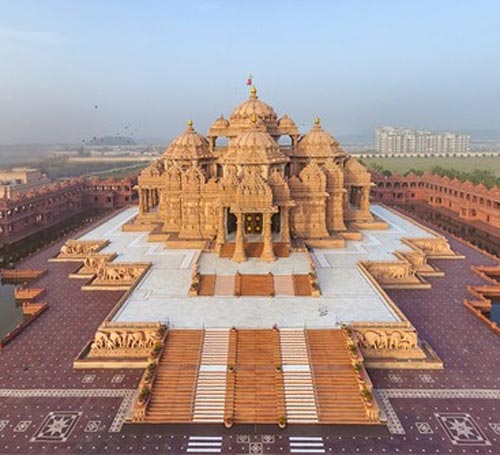
- : Noida Mor, Pandav Nagar, Delhi - 110092..
- : Closest airport: New Delhi (22.2 km), Closest railway station: New Delhi (9.4 km)..
- : 9:30am-6:30pm (Monday closed)
- : 6-10 hours..
- : October-March is the ideal time..
- : Budget and luxury hotels, resorts are available in Delhi..
 Basic info
Basic info
Akshardham or Swaminarayan Akshardham complex is a Hindu temple in Delhi which is also considered as a spiritual-cultural campus that displays traditional Hindu and Indian culture, spirituality and architecture portraying since several millennia. The temple complex was inspired by Yogiji Maharaj and was constructed by Pramukh Swami Maharaj. It was inaugurated on 6th November 2005 in the presence of several eminent personalities including Dr. A. P. J. Abdul Kalam, Manmohan Singh, L.K Advani and B.L Joshi to name a few.
The main temple is located right at the center of the complex, as per Vastu Shastra and Pancharatra shastra. The main shrine is the focal point of the complex where the main deity worshipped is Swaminarayan. The temple stands tall at 141-foot high and is spread over 316-foot wide extending 356-foot long area. Intricately carved with flora, fauna, dancers, deities and musical instruments, the temple features a perfect blend of architectural styles across the country as per the standards of Maharishi Vastu Architecture. The entire temple is constructed of Rajasthani pink sandstone and Italian Carrara marble where no ferrous metal has been used.
 Tourist attractions
Tourist attractions
Apart from the spectacular architecture and decorations of the temple that grab attention as the focal point of the complex, the temple consists of 234 ornately carved pillars, nine domes, and 20,000 murtis of sadhus, devotees, and acharyas which are a mesmerizing sight. There are a total of 148 life sized elephants, weighing 3000 tons, featuring the Gajendra Pith famous for paying tribute to the elephant known for its important in Hindu culture and history.
 Things to do
Things to do
Apart from the regular darshan and worship at the temple, one must check out Akshardham as the Guinness World Record holder as the World's Largest Comprehensive Hindu Temple. Covering an area of 86342 sq ft, the ancient style hand-carved stone temple features the idols of of Sita Ram, Radha Krishna, Shiv Parvati, and Lakshmi Narayan. One must also visit the Hall of Values and the Nilkanth Darshan, experience the 12-minute boat ride, visit the musical fountain which is India's largest stepwell and must also see the Garden of India.
Chandni Chowk, Delhi.
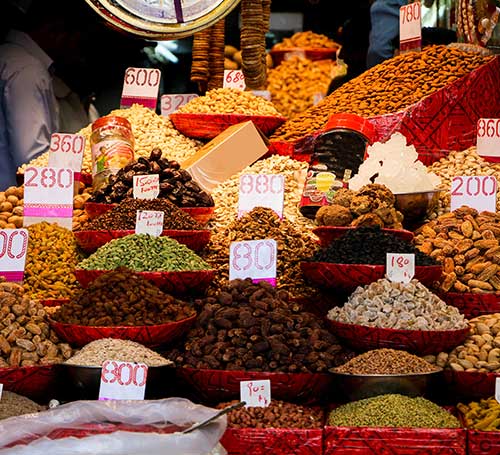
- : Chandni Chowk, Delhi - 110006.
- : Closest airport: New Delhi (16.8 km); Closest railway station: New Delhi (1.5 km).
- : 9:30am-8pm (Sunday closed
- : 2-3 hours.
- : November to March is the ideal time.
- : Budget and luxury hotels, resorts are available in Delhi..
 Basic info
Basic info
Chandni Chowk Market is a shopper's paradise. Since forever in history, the age old market of Delhi has been a pure delight for all who know the art of shopping. Built in the 17th century by the Mughal ruler Shah Jahan, the market lies opposite the Red Fort and very close to Fatehpur Mosque. The market derives its name from a pool that used to be located at the center of the market place and the pool used to reflect the moonlight (chandni).
Chandni Chowk has something or the other to offer everyone around, and hence a chaotic place. Being popular as the oldest and the busiest market of Delhi, Chandni Chowk has stores and stalls selling everything from apparels to sarees to jewelleries to crockery and Indian spices, exclusive dry fruits and fresh flowers. This ancient market stands out for the fact that it has retained its charm and historic value over all these years and holds a special charisma that no other market in the whole country can beat up to.
 Tourist attractions
Tourist attractions
Tourists, especially the shopaholics, would have a great time exploring the narrow streets of Chandni Chowk to come up with shops of their preference. And it is indeed fun and adventurous. While the unmatched quality is praiseworthy, the reasonable price and quick availability of the exclusive items make it a unique place and a huge tourist attraction. The entire market is divided in several narrow streets dedicated for variety of items like clothes, jewellry, candles, perfumes, lifestyle items, etc.
 Things to do
Things to do
While shopping remains the prime to-do thing in Chandni Chowk which is the largest retail market as well as a wholesale market, look around for great deals and bargains while you are into your shopping spree. Don’t forget to pick a souvenir or two from your Delhi trip, and no place can be a better one than Chandni Chowk. Your visit to the region will not be complete if you don’t devour into the local delicacies which are must try and must take home.
Humayun's Tomb, Delhi.
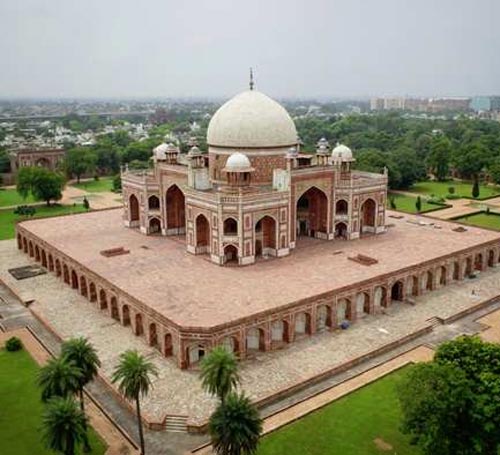
- : Mathura Road Opposite Dargah, Nizamuddin, Delhi - 110013..
- : Closest airport: New Delhi (18.4 km), Closest railway station: New Delhi (8.4 km)..
- : 6am-6pm.
- : 2 hours..
- : November to March is the ideal time..
- : Budget and luxury hotels, resorts are available in Delhi..
 Basic info
Basic info
Humayun's Tomb was built in 1570 as the first garden tomb of the Indian subcontinent. It is one of the major tourist destinations of Delhi and the first of the grand dynastic mausoleum that displayed Mughal architecture with the similar style reaching its highest with Taj Mahal around 80 years later. Standing within a huge complex of 27.04 ha, the garden tomb displays Persian and Indian craftsmanship in the best possible way.
The Humayun's Tomb was built with the patronage of Humayun's son, the great Emperor Akbar. It is a beautiful example of the charbagh (a four quadrant garden representing the four rivers of Quranic paradise), where the pools are joined by channels. The entry is from the lofty gateways on the south and from the west with pavilions that are found in the centre of the eastern and northern walls.
 Tourist attractions
Tourist attractions
The Humayun's Tomb is a masterpiece mausoleum that stands on a high and wide platform. Surrounded by an irregular octagonal plan with four long sides and chambered edges, a 42.5 m high double dome surrounds the tomb. It is a visual treat to watch the marbles flanked by pillared kiosks while the ceramic tiles ornament the domes of the central chhatris. The major tourist attraction is the fact that the tomb is the dormitory of the Mughals with over 150 Mughal family members buried down in the cells.
 Things to do
Things to do
The Humayun's Tomb is the perfect place for the ones interested in Indian history and ancient culture. It stands as the first important example of India's architecture of those times and as the symbol of the powerful Mughal dynasty that used to reign and unify most of the sub continent. The intricate work of the tomb is a must checkout for the visitors, which stands proudly as the grandeur of design and garden setting with no precedence in the Islamic world for a mausoleum.
India Gate, Delhi.
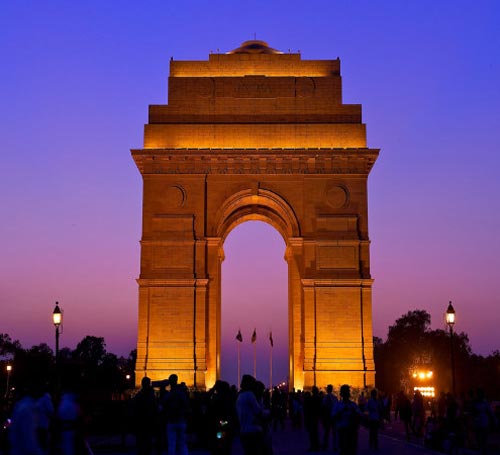
- : Rajpath, India Gate, Delhi - 110001..
- : Closest airport: New Delhi (14.1 km), Closest railway station: New Delhi (4.7 km)..
- : Open 24 hours.
- : 1-2 hours..
- : November-March is the ideal time..
- : Budget and luxury hotels, resorts are available in Delhi..
 Basic info
Basic info
India Gate is one of the most popular tourist destinations, which stands majestically in New Delhi offering a jaw-dropping sight. It is a war memorial built in the memory of 70,000 soldiers of the British Indian Army who were martyred in the First World War and the Third Anglo-Afghan War. Located astride the Rajpath on the eastern edge of the ceremonial axis of New Delhi, India Gate beautifully exhibits the architectural style of the triumphal arch much similar to those of the Arch of Constantine, Rome, and is also compared to the Arc de Triomphe, Paris, and the Gateway of India, Mumbai.
The India Gate was initially designed by Sir Edwin Lutyens, with 13, 516 names of Indian and British soldiers engraved on its arch and foundations. Later, Amar Jawan Jyoti was built as a tribute to Indian soldiers who were martyred in the Indo-Pakistan War of December 1971. It is a simple small structure with a black marble pinth, where a reversed rifle stands, capped by a war helmet and enclosed by four eternal flames, and serves as India?s Tomb for the Unknown Soldier. The India Gate is an impressive structure of 42 m high which gets additional charm from its attractive surroundings.
 Tourist attractions
Tourist attractions
The major attraction is the spot itself which speaks for the sacrifice made the martyrs and soldiers. It is a symbol of sacrifice and dedication of India soldiers and people visit there to pay homage to them. Since the time it was completed in 1931, the spot has been a major crowd puller for its unique purpose of construction. There are inscriptions on both side of cornice of the India Gate with the word India inscribed flanked by the dates MCMXIV (1914 left) and MCMXIX (1919 right). Below the word India is the purpose of the construction mentioned in bold letters.
 Things to do
Things to do
The popularity of India Gate can be witnessed from the fact that it has been an integral part of every Delhi tours since ever. Today, the area surrounding the Rajpath is also a popular recreational spot where people visit for different activities like boating, sightseeing and simply to relax. It is also the perfect picnic spot for visitors.
Iron Pillar / Ashoka Pillar, Delhi.
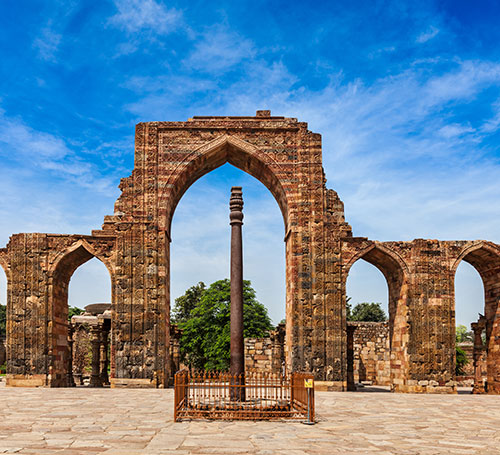
- : Mehrauli, Delhi, 110030.
- : Closest airport: New Delhi (12.5 km); Closest railway station: New Delhi (15.9 km).
- : 6am-6pm
- : 1-2 hours.
- : November to March is the best time.
- : Budget and luxury hotels, resorts are available in Delhi..
 Basic info
Basic info
The Iron Pillar of Delhi, also known as the Ashoka Pillar is a historical pillar that is 23 feet 8 inches tall with a diameter structure of 16 inches. Constructed by Chandragupta I, it is a unique structure that stands in the Qutb complex at Mehrauli in Delhi. Weighing more than 6000 kg, the pillar is assumed to have been erected in Udayagiri and later reused by one of the Gupta monarchs in 402 CE, though the exact date and location remain a matter of dispute.
The Iron Pillar stands out for the fact that it is built of some mysterious iron that has not rusted since its construction which dates back to more than 1600 years back. It presents an excellent example of scientific and engineering advancement of ancient India and is considered among the finest and the oldest mysteries that are yet a puzzle for the archaeologists and materials scientists.
 Tourist attractions
Tourist attractions
People visit the spot to witness the mystery that stands upright in open air without a fine line of rust being spotted on it. The iron pillar looks sturdy with a 23.8 ft height from the top of its capital to the bottom of its base, while another 3.8 ft runs below the ground. Tourists are stunned to see that Iron Pillar which is made up of 6 tons of 98% wrought iron, which might be one of the reasons why the pillar has not rusted. There are also a number of inscriptions and graffiti of different dates on the body of the pillar, few of which still remain unstudied.
 Things to do
Things to do
Though the pillar today remains as a thing of immense mystery and curiosity for visitors and a subject of photography for several others, not very long ago there used to be a popular belief that the pillar brings good luck to the person who could encircle it with his back at the pillar while trying to touch his hands meet on the other side. However, this practice led to a little discoloration in the lower part of the pillar and hence the visits are no longer allowed to touch it.
Jama Masjid, Delhi.
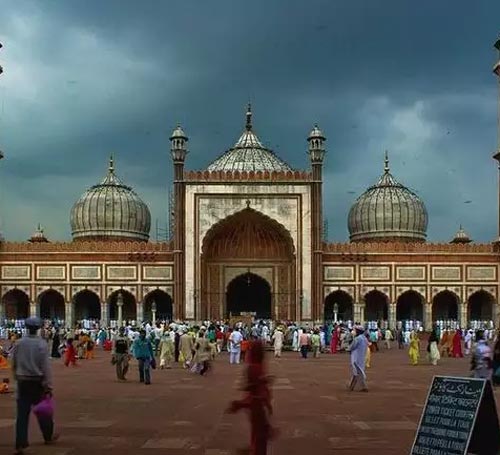
- : Meena Bazaar, Jama Masjid, Chandni Chowk, Delhi - 110006..
- : Closest airport: New Delhi (19.1 km), Closest railway station: New Delhi (2.6 km)..
- : 7am - 12pm, 1:30pm - 6:30pm.
- : 1-2 hours..
- : October-March is the ideal time (in early mornings).
- : Budget and luxury hotels, resorts are available in Delhi..
 Basic info
Basic info
Located in one of the busiest corners of Old Delhi, the Jama Masjid is the largest and most popular mosque of India. It was built by Shah Jahan between 1644 and 1656 with an expenditure of 1 million rupees. The mosque is so big that its courtyard can offer seats up to a total of 25,000 devotees for prayers. There are three large gates, four towers and two 40 m high minarets that are enclose within the mosque.
The Jama Masjid portrays a fusion of Hindu and Jain traditions. Built on a hillock in the old city of Delhi, the magnificent mosque was initially named as Masjid Jahan Nurma that means The World Reflecting Mosque. Around 6000 workers were deployed in the construction of the mosque done with red sandstone and white marble. The mosque has fine intricate designs decorate in the interiors and verses of the Holy Quran written. Black and white marbles ornament the floor of the mosque to give it a look of the prayer mat. The Holy Quran is kept inside the cabinet at the north gate where the prophet's beard-hair, sandals and his footprints implanted in a marble block are also preserved.
 Things to do
Things to do
While the beauty of the ancient culture, tradition and architecture is a must for visitors to see and treat their eyes with, you can also join in for the communal prayers albeit in proper attire. No outfit showing the head, legs and shoulders are allowed to be worn inside. One must also remove their shoes before entering the mosque. Visiting the Jama Masjid early in the morning is the best suitable time to avoid much crowd. It is also ideal time for photography when you would get the best light.
Jantar Mantar, Delhi.
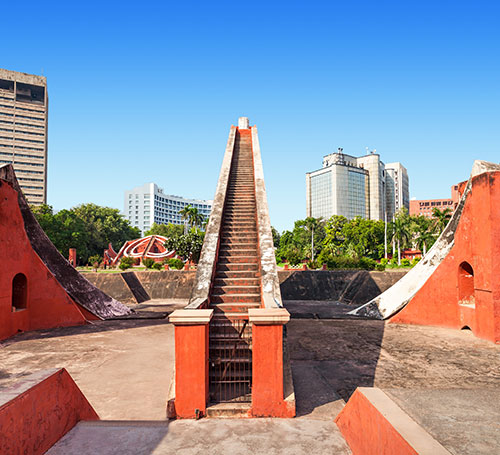
- : Sansad Marg, Connaught Place, Delhi - 110001..
- : Closest airport: New Delhi (13.3 km); Closest railway station: New Delhi (2.5 km)..
- : 6am-6pm.
- : 1 hours..
- : October to March is the ideal time..
- : Budget and luxury hotels, resorts are available in Delhi..
 Basic info
Basic info
Jantar Mantar is located in the modern city of New Delhi and is among the most visited places of the city liked by kids and adults both. Built by Maharaja Jai Singh II of Jaipur from 1723 to 1724, it was done as a task given by the Mughal emperor Muhammad Shah for revising the calendar and astronomical tables.
Jantar Mantar is a vast observatory built to help and improve the studies of time and space during those days. It consists of 13 architectural astronomy instruments which are used to compile the astronomical tables and to predict the movement and timings of the celestial bodies like sun, moon and planets. The construction and placement of the instruments are so well engineered that the setup allowed the observer to note the position of the heavenly bodies with bare eyes. There are four distinct instruments within the observatory - the Samrat Yantra, the Jayaprakash, Rama Yantra and the Misra Yantra, among which the Samrat Yantra is the supreme instrument which is an equal hour sundial of 70 feet high, 114 feet long and 10 feet thick.
 Tourist attractions
Tourist attractions
The major tourist attractions of the Jantar Mantar is the fact how the construction built of brick, rubble and then plastered with lime, these instruments have restored from time to time without making any significant alteration. The apparatus placed here follows three classical celestial coordinates to check on the tracking position of the celestial bodies - horizon-zenith local system, the equatorial system and the ecliptic system. The most unique structure is the Samrat Yantra which used to be one revolutionary one during those days, which was used to measure the declination angle of planets. Must check out is the Jayaprakash Yantra which can be aligned to the position of a star with respect to various markings or a windows age from inside.
 Things to do
Things to do
One can visit and check the different instruments to know in details about their respective uses and constructions. It is indeed a unique creation with exceptional engineering and architecture to predict the times and movements of planets and stars, and hence, a must visit for people interested in astronomy.
Laxminarayan Temple, Delhi.
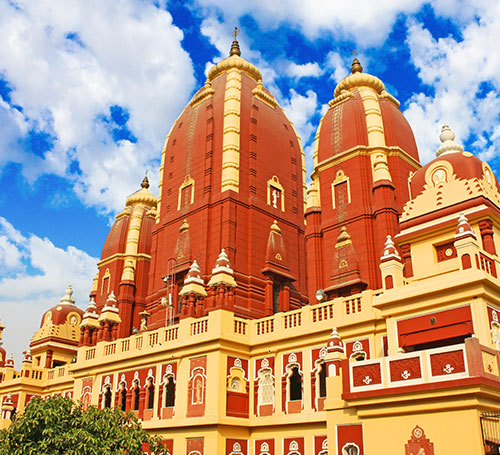
- : Mandir Marg, Near Golmarket, Gole Market, Delhi - 110001.
- : Closest airport: New Delhi (12.7 km); Closest railway station: New Delhi (3.9 km).
- : 4:30am-1:30pm and 2:30pm-9:00 pm.
- : 2 hours..
- : November to March and during festivals like Janmashtami and Diwali..
- : Budget and luxury hotels, resorts are available in Delhi..
 Basic info
Basic info
Laxminarayan Temple or Birla Temple of Delhi is a Hindu temple which is one of those temples that welcome visitors and devotees of all castes and religions. The temple is dedicated to its main deity Lord Laxminarayan, better known as Lord Vishnu, or the preserver in the Trimurti, comprising of Brahma, Vishnu and Mahesh. The temple is situated towards the west of Connaught Place area and is a major tourist attraction.
The Laxminarayan Temple was built in 1933 by BD Birla, the popular industrialist, and his son Jugal Kishore Birla as guided by Pandit Vishwanath Shastri. The foundation stone was laid by Maharaj Udaybhanu Singh and it was inaugurated by Mahatma Gandhi on the condition that it will be open for people of all castes. Spread over a total area of 7.5 acres that comprises many fountains, shrines and sculptures of religious and national importance, the temple is a major tourist attraction among the local people as well as for tourist traveling from all over the country.
Lotus Temple, Delhi.
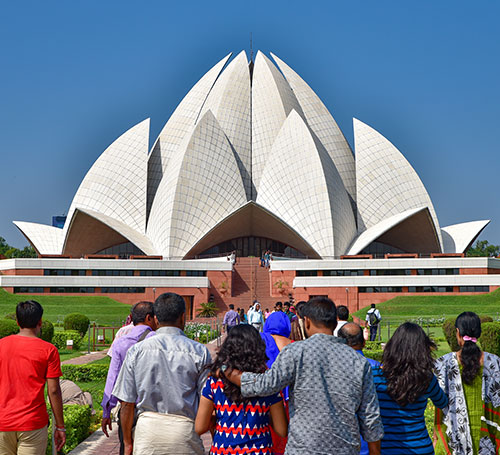
- : Lotus Temple Rd, Bahapur, Shambhu Dayal Bagh, Kalkaji, Delhi - 110019..
- : Closest airport: New Delhi (16.4 km); Closest railway station: New Delhi (15.4 km)..
- : 9am-5pm/7pm (Winter-Summer respectively) (Monday closed).
- : 1-2 hour.
- : November to March is the best time..
- : Budget and luxury hotels, resorts are available in Delhi..
 Basic info
Basic info
The Lotus Temple located in Delhi is a Baha'i House of Worship built in 1986 by architect Furiburz Sabha. The temple is notable for its lotus flowerlike shape, the Lotus Temple is one of the most visited tourist attraction. The symbol of lotus was chosen to symbolize common in all the religions like Hinduism, Buddhism, Jainism and Islam. The temple is open to devotees and visitors irrespective their religious background, gender, and other such distinctions. The Lotus Temple is one of the seven Baha'i Houses of Worship across the world, and the guests are allowed to chant scriptures of any religion inside the prayer hall of the extraordinary structure. The built and look of the Lotus Temple is inspired from a lotus flower with the backdrop of lush green landscape making the entire ambiance tranquil and pleasant. The temple is made of white marbles, cement, dolomite and sand, and there are around nine pools around it with crystal clear water in them. The sanctum is in the form of 27 blooming petals that stands at 40 m tall and can accommodate around 2000 people at a time. The central hall can be accessed via nine different doors of the temple which all open onto the same hall.
National Rail Museum, Delhi.
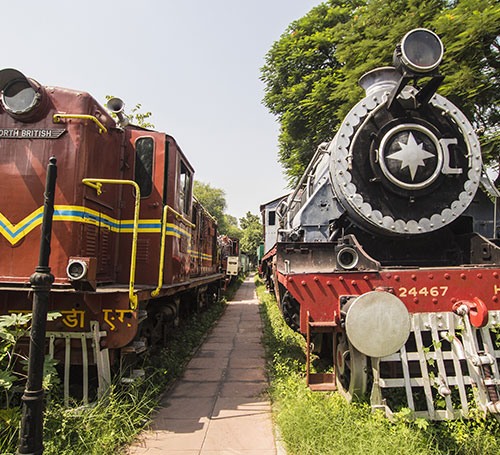
- : Near Bhutan Embassy, Chanakyapuri, Delhi - 110021..
- : Closest airport: New Delhi (8.1 km); Closest railway station: New Delhi (12.1 km).
- : 10am-5pm
- : 2-3 hours.
- : November to March is the best time.
- : Budget and luxury hotels, resorts are available in Delhi..
 Basic info
Basic info
The National Rail Museum is a unique concept to portray the heritage of Indian Railways which has been the most prominent means of transportation in the country for the past two centuries. Being one of the largest in the world, Indian Rail Network needed a celebration and recognition of the remarkable journey covered. And hence the idea of the museum was proposed in 1962 by a rail enthusiast Michael Graham Sat-ow.
The museum was constructed in 1970-1977 when the work began and was inaugurated as the Rail Transport Museum in 1977 by Kamalapati Tripathi, the minister for public transportation. Spread over a total area of 11 acres, the museum houses huge galleries with pictures, models, paper cuttings and many historical records and train models including simulations of coaches, diesel engines, and steam engines. The different segments of the museum are intended to throw light on how Indian rail functions, what technologies are used to operate the rail network, the evolution of Indian rail since its advent till date and many more relevant facts.
 Tourist attractions
Tourist attractions
The National Rail Museum is a unique attempt that features a collection of some 100+ real size exhibits of Indian Railway. The major attractions include the museum’s spectacular collection of historical photographs, simulations of coaches, diesel engines, and steam engines with individual tablets mentioned next to each exhibit. The indoor gallery houses exclusive collections from historical records and train models, to railway infrastructure and interactive exhibits which are sure to woo the visitors. Among the biggest attractions is the exotic collection that includes the Fairy Queen - the oldest working steam locomotive in the world, the Patiala State Monorail – rarest of the running monorails of the world and the Morris Fire Engine - the only one of its kind running on rubber tyres.
 Things to do
Things to do
It is fun as well as informative to check out the different types of signaling equipment, telecommunication systems, Indian railway uniforms, antique railway furniture, and builder plates of companies engaged in locomotive construction. Don’t miss the original life-size exhibits that have been maintained and restored since years, and few even more than a century.
National Zoological Park, Delhi.
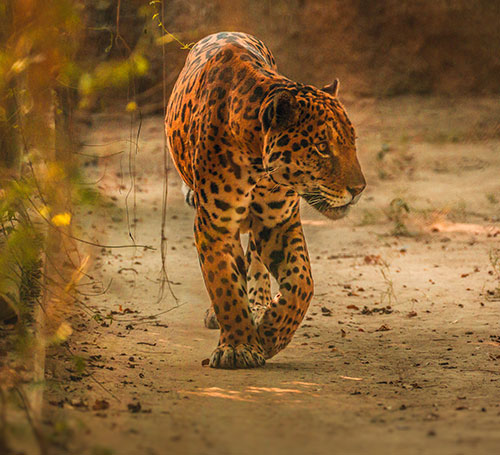
- : Mathura Rd, Pragati Maidan, Delhi - 110003..
- : Closest airport: New Delhi (15.6 km); Closest railway station: New Delhi (5.7 km)..
- : 9am-4:30pm (Friday and National Holidays closed)
- : 3-4 hours.
- : November to February is the ideal time..
- : Budget and luxury hotels, resorts are available in Delhi..
 Basic info
Basic info
The National Zoological Park is one of the most visited zoos in India. But across a total area of 176-acre, this zoo is setup in the middle of a flourishing and busy urban Delhi. The zoo is built along a 16th century citadel, a lush green island and a huge collection of animals and birds ranging in a total number of 1350 animals representing almost 130 species of animals and birds from all over the world.
The National Zoological Park was inaugurated in November 1959 after the Indian Government proposed the idea of creating a zoo in Delhi and setup a committee for the same in 1952. It was officially named National Zoological Park in 1982. The zoo was established with the hope to make it a model for other zoos in the country. It is also a part of conservation breeding programmes for the Central Zoo Authority for the royal Bengal tiger, brow antlered deer, Indian rhinoceros, swamp deer, Asiatic lion, and red jungle fowl.
 Tourist attractions
Tourist attractions
The zoo houses a huge number of animals that include chimpanzee, hippopotamus, spider monkey, African wild buffalo, Giraffes, Gir lion, and Zebras which are found in the enclosures towards the right from the entrance. While the left wing from the entrance is dedicated mainly for the birds like peafowl and animals like jaguars, hyenas and macaques. The swamps are especially designed for water birds and the central portion is dedicated for an underground reptile house.
 Things to do
Things to do
The zoo is a refreshing spot to visit for kids as well as for adults who want to explore the wildlife closely and know in details about different species. The enthusiasts must check out the rare animals and birds and the enclosures are properly guided and directed throughout the zoo premise. One is free to do photography within the zoo.
Qutub Minar, Delhi.
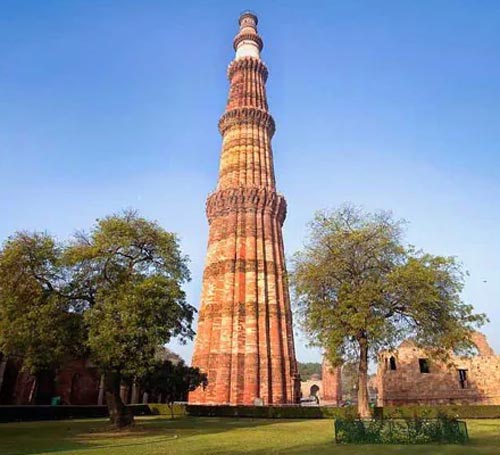
- : Mehrauli, Delhi - 110030..
- : Closest airport: New Delhi (13.9 km), Closest railway station: New Delhi (17.9 km)..
- : 7am-5pm.
- : 2-3 hours..
- : October-March is the ideal time..
- : Budget and luxury hotels, resorts are available in Delhi..
 Basic info
Basic info
The Qutub Minar is a UNESCO World Heritage Site in the Mehrauli area of Old Delhi. It is a 239.5 feet minaret with five storeys and a huge 47 feet diameter at its base shrinking gradually to 9 feet at the top of the peak. There are 379 steps in a spiral staircase format, though the tower has been closed for public after a mishap in 1981.
The minaret was constructed by Qutb ud Din Aibak, the founder of the Delhi Sultanate who started the construction with its first storey in 1192. The further three storeys were constructed by Akbar's successor Iltutmish and the topmost storey was rebuilt by by Firuz Shah Tughlaq, who added another storey as well in 1369. The style of Qutub Minar is inspired from Afghanistan's Minaret of Jam and adapted to local artistic conventions. There are several numerous inscriptions in Parso-Arabic and Nagari characters all over the minaret which is ornamented with pale red sandstone in the first three storeys, marble in the 4th one and last one at the top is built of marble and sandstone.
 Tourist attractions
Tourist attractions
The major tourist attraction is the huge construction which holds several historical significances. The peculiar mix of red sandstone and the use of marble for the last two storeys at the top make the minaret a unique monument. The architectural styles depicting Muslim, Hindu and Saracenic patterns in their exclusive designs are sure to grab eyeballs. Watch out for the slight tilt of 65 cm that can be observed from a distance.
 Things to do
Things to do
The Qutub Minar is a part of the larger complex incorporating several historical monuments that includes quite a number of tombs, among which Quwwat-ul-Islam (the Might of Islam) mosque is the most significant which is considered to be the first extant mosque in India. There is the Iron Pillar as another baffling monument in the complex, and the existence of the same isn't known to anyone. There was the provision to climb up the Qutub Minar till 1981, but it is closed for visitors now following an accident.
Rashtrapati Bhavan, Delhi.
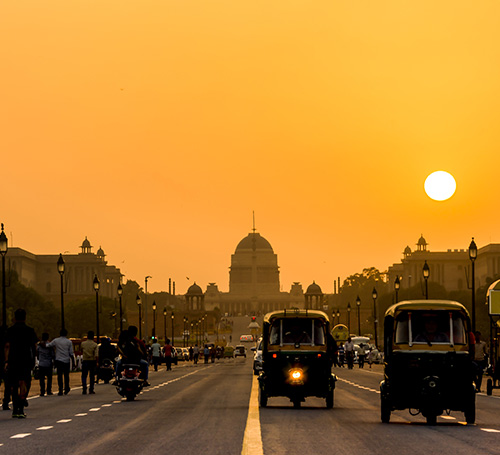
- : Rashtrapati Bhawan, President's Estate, Delhi -110004..
- : Closest airport: New Delhi (11.5 km); Closest railway station: New Delhi (4.7 km)..
- : 9:30am-4pm (only on Friday, Saturday and Sunday).
- : 3 hours.
- : November to March is the ideal time..
- : Budget and luxury hotels, resorts are available in Delhi..
 Basic info
Basic info
Lying on the western end of the Rajpath in New Delhi is the official residence of the President the Rashtrapati Bhawan. It was originally built as the Viceroy's House as designed by Sir Edwin Lutyens and Herbert Baker. The construction began in 1911 and was completed in 1929 and took around seventeen years to build the presidential palace. More than seven hundred million bricks and three million cubic feet of stones were used to complete the massive architectural marvel that stands on a 330 acre of estate.
Spread across a total area of 5 acres covering 340 rooms over four floors, the estate includes the main building along with the president's official residence, including reception halls, guest rooms and offices. The region also includes huge presidential Mughal gardens, huge open spaces, residences and offices of bodyguards, staffs and other relevant people. Speaking of the area, it is the largest residence of any head of state in the whole world.
 Tourist attractions
Tourist attractions
The main attraction of Rashtrapati Bhavan is its massive expanded structure and the huge open space with beautiful gardens adding to its magnificence. Though the monument was designed by Lutyens, it is evident from the architecture that his design was essentially classical with inspiration drawn from Indian architecture. The various classical Indian motifs depicted in the architecture range from imperial elephants to circular stone basins. The Durbar Hall is one of the major attractions with a 22.8 m diameter dome inside the building which is decorated with various colored marbles. Worth mentioning is the Viceroy's Throne which is a spectacular thing inside the main hall.
 Things to do
Things to do
Visitors are not allowed inside the Rashtrapati Bhavan except on Fridays, Saturdays and Sundays. One has to take special permit and make prior online booking as mandatory to visit Rashtrapati Bhavan. It is also a must to carry valid ID proofs with you and must provide the same while entering, when asked. The museum inside Rashtrapati Bhavan was inaugurated by former President of India Pranab Mukherjee in 2014 is a must visit place which helps visitors to get an inside view of the main building along with its artistic architectural details.
Safdarjung's Tomb, Delhi.
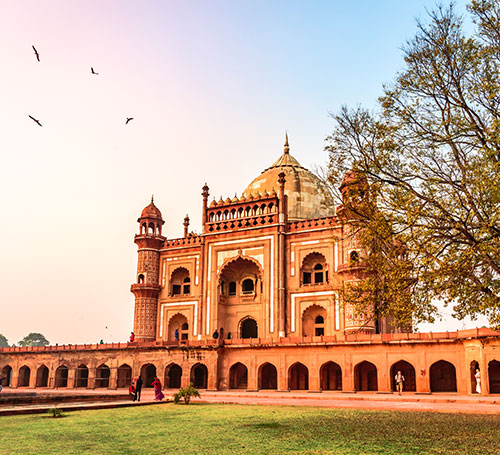
- : Airforce Golf Course, Delhi Race Club, Delhi, 110021..
- : Closest airport: New Delhi (11.5 km); Closest railway station: New Delhi (7.9 km).
- : 7am-5pm
- : 1 hour.
- : November to March is the best time.
- : Budget and luxury hotels, resorts are available in Delhi..
 Basic info
Basic info
The Safdarjung Tomb, also referred to as “Safdarjung Ka Maqbara” is a garden tomb located in New Delhi. It was built in the 18th century as a mausoleum of Safdarjung who was a statesman and the Prime Minister during the reign of Ahmad Shah Bahadur. The monument was built by Safdarjung’s son Nawab Shujaud Daula as the last monumental garden tomb displaying Mughal architectural style.
The Safdarjung Tomb was designed by an Ethiopian architect and was constructed in line with the famous historical monument, Humayun’s Tomb. However, the tomb of Mughal Emperor Humayun in Delhi, has much more grandeur and style compared to the Safdarjung’s Tomb. A huge square garden measuring 920 feet surrounds the mausoleum that is constructed on an elevated platform along with a courtyard and a three-domed mosque. The tomb is built of red and brownish-yellow coloured sandstone constructed on a high terrace and capped with a huge central dome.
 Tourist attractions
Tourist attractions
The major tourist attraction of the mausoleum is the garden area in square surrounding the tomb that is approximately 920 feet long on each side. Tourists can travel from one channel to another that leads to the entrance gate and to the other three pavilions. The Jangli Mahal (palace in the forest), Moti Mahal (pearl palace) and Badshah Pasand (King’s favorite) are the pavilions laid out in the western, northern and southern directions.
 Things to do
Things to do
The Safdarjung Tomb shouldn’t be compared to the likes of Taj Mahal or Humayun’s Tomb as it was built during the time when the Mughal rule was in the downslide. However, it is an exceptional spot of interest for the history lovers and the nature lovers.
The Red Fort, Delhi.
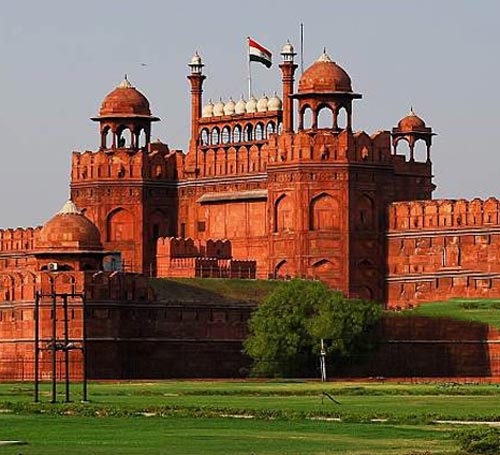
- : Netaji Subhash Marg, Lal Qila, Chandni Chowk, Old Delhi, Delhi - 110006..
- : airport: New Delhi (18.7 km), Closest railway station: Old Delhi (3.6 km)..
- : 9:30am-4:30pm (Monday closed).
- : 2-3 hours..
- : October-February is the ideal time..
- : Budget and luxury hotels, resorts are available in Delhi..
 Basic info
Basic info
The Red Fort is a historic fort in Delhi which used to be the main residence of the Mughal emperors for over 200 years till the year 1856. Constructed in 1639 by the fifth Mughal Emperor Shah Jahan, it was also the ceremonial and political center of the Mughal state during his reign after the Mughal capital was shifted to Delhi from Agra. The Fort derives its name from its massive enclosing walls of red sandstone which adds beauty to its innovative architectural style.
The Red Fort was designated a UNESCO World Heritage Site in 2007. Although the palace was planned according to Islamic prototypes, each pavilion contains architectural style that reflects Mughal, Persian, Timurid and Hindu traditions. Lying on the banks of the Yamuna River, the vast stretch of red boundary walls of the fort under the sun-warmed skies of Old Delhi defines the medieval craze at its best. Spread over a total area of 254.67 acres enclosed by 2.41 km of defensive walls punctuated by turrets and bastions of 59 feet to 108 feet high, the majestic fort stands in octagonal shape. The marble, floral decorations and double domes in the interiors exemplify later Mughal architecture.
 Tourist attractions
Tourist attractions
The monument itself is a major tourist attraction of Delhi. To welcome the visitors, stands the Lahori Gate (main gate), which is a veil drawn across the face of a beautiful woman as Shah Jahan described it. Every year on Indian Independence Day since 1947, the Indian Flag is unfurled here by the Prime Minister. The Naubat Khana, Diwan-i-Aam (Public Audience Hall), Diwan-i-Khaas (Hall of Private Audience) and the Hamman are among the major tourist attractions. There lies a hidden 'baoli' (stepwell) touted to be older than the Red Fort inaccessible to visitors till date.
 Things to do
Things to do
The Red Fort or the Lal Qila is a platform of several afternoon stories and legends making it the ideal place for an interesting cosy chat. The local guides would take you around telling stories how the prisoners were beheaded and used as a foundation for the monument as a mark of good luck. The chambers within the stepwell were converted into a prison, and the baoli was not easy to be spotted. Take a round of the Chhatta Chowk which is a long passage way with a market where silk, jewellery and other items were sold during the Mughal period.








